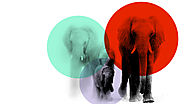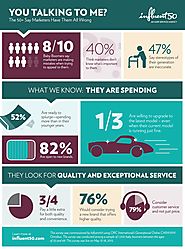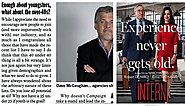-
About
- About Listly
- Community & Support
- Howto
- Chrome Extension
- Bookmarklet
- WordPress Plugin
- Listly Premium
- Privacy
- Terms
- DMCA Copyright
- © 2010-2025 Boomy Labs


 Sandra Bauman
Sandra Bauman
Listly by Sandra Bauman
Resources we've used in our work with Boomer-related retirement projects.

Allure is changing the way we think about aging by changing the way we talk about aging.

We need to rediscover what “elders” can teach us.

Bye Bye Funny Business, Pete Holmes and Jamie Lee enter retirement

We all get old, and at some point, everyone's going to need an app that embiggens that doggone tiny mouse type.

Developers increasingly invest in neighborhoods dedicated to holistic health and wellness–and the growing industry is worth $134 billion worldwide.

At Boston's Beacon Hill Village, older people commit to helping each other, says MIT AgeLab director Joseph F. Coughlin.

More and more baby boomers are choosing to sell their homes and move into 55-plus mobile home communities in warm areas where rents are affordable and there’s a sense of community among residents.

The anti-clutter movement has met the anti-brown furniture movement. And feelings are getting hurt.

Most older people don’t relocate after they retire, but when they do, it’s not likely to be to a place selected by a survey editor.

How the 50 states and Washington D.C. rank, based on affordability, health care and quality of life.

It's hard to convince venture capitalists and other investors to put money into ventures serving older Americans. But it's getting easier.

4 fundamental franchise leadership principles drive successful, multi-dimensional franchise systems, led by motivated franchisors and franchisees.

As baby boomers age, will they change the paradigm of older adult housing?

Departing the workforce entirely and entering retirement at age 65 is no longer a reality for many older people in the United States, according to a recent survey by The Associated Press-NORC Center for Public Affairs Research. The study finds that there are large numbers of older Americans who are currently, or who expect to be, working longer. However, this doesn't necessarily mean that they are continuing with the same employment circumstances indefinitely.

Anyone whose business involves selling something can tell you there is no shortage of information and research about connecting with millennials. But as millennials capture marketers’ attention, 75 million influential customers, between the ages of 51 and 69, are out there ready to spend. Influent50 researchi shows that marketers today are either speaking to Baby Boomers ineffectively – or ignoring them altogether – and the impact is so profound that Boomers themselves are taking notice.

Before we jump enthusiastic into the New Year, it's important to reflect on the consumer behaviors that shaped marketing trends in 2015. How the popularity of texting gave us the pizza emoji. How our appetite for content galvanized native advertising.

Create a FREE account to: Get 15 free articles per month* Access to personalized content Save articles and create shareable folders in your personal HBR library Get 20% off your first order using code HBRORGREG3** not including articles that are exclusively for Harvard Business Review magazine subscribers *does not include

Anyone whose business involves selling something can tell you there is no shortage of information and research about connecting with millennials. But as millennials capture marketers' attention, 75 million influential customers, between the ages of 51 and 69, are out there ready to spend.

Coincidence or not I have been aware for most of this year that Robert DeNiro would have a new movie out this month about him being a 70 year old intern in a e-retailing company run by Anne Hathaway.
